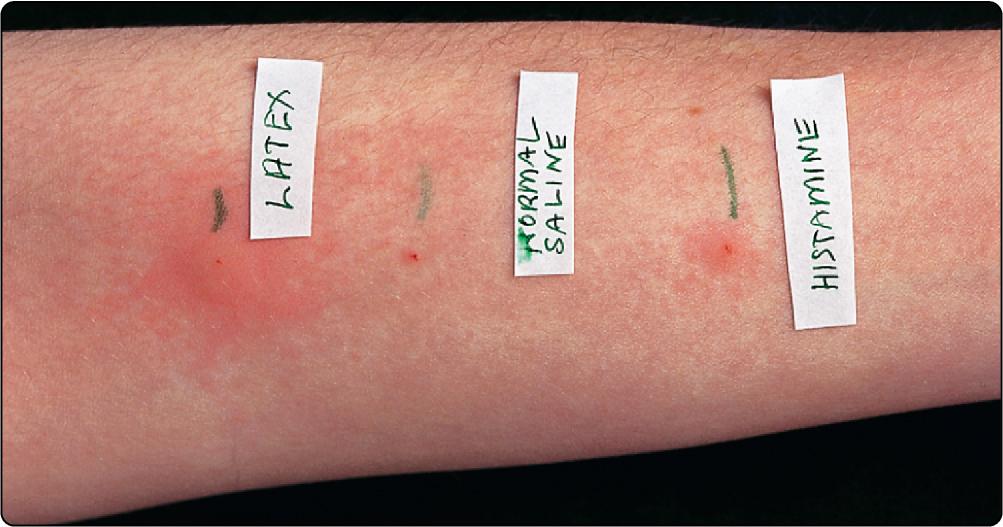Physical Address
304 North Cardinal St.
Dorchester Center, MA 02124
Clinical and laboratory tests of an immunological nature are valuable in the diagnosis and management of certain skin diseases. Patch tests are helpful in the investigation of contact dermatitis , serum immunoglobulin (Ig) E tests or prick tests are sometimes of use in atopic disease , and immunofluorescent studies on biopsied skin (or with serum) are essential in the diagnosis of bullous disorders and in some other conditions such as connective tissue diseases (e.g. lupus erythematosus) or vasculitis.
Skin prick testing detects immediate ( type I ) hypersensitivity. The reaction is mediated by the antigen-triggered IgE-mediated release of vasoactive substances from skin mast cells (p. 94). Small drops of commercially prepared antigen solutions are placed on marked areas on the forearm and lightly pricked into the skin using separate blunt lancets. The stratum corneum of the epidermis is punctured by gently pressing the blunt lancet perpendicular to the skin surface through the test solution. It is important to develop a prick testing technique that is reproducible. Food allergens are often tested by pricking the fresh food and then the skin (prick-to-prick testing). The sites are inspected at 15 minutes, and a positive result is regarded, by convention, as one showing a wheal of 3 mm or greater ( Fig. 75.1 ). Patients should have stopped antihistamines 48 hours before the test. Prick tests are used to demonstrate allergy to aeroallergens (e.g. house dust mite) or to foods (e.g. hen’s egg or peanut), and contact urticaria to latex (p. 160). A positive test correlates well with a positive allergen-specific IgE test (usually an enzyme-linked immunosorbent assay [ELISA]; the radioallergosorbent test [RAST] is no longer used). The risk of anaphylaxis is very small, but resuscitation facilities, including adrenaline (epinephrine) for intramuscular injection, antihistamines and oxygen are recommended, especially for testing of food allergy and high-risk subjects (asthmatics).

Become a Clinical Tree membership for Full access and enjoy Unlimited articles
If you are a member. Log in here